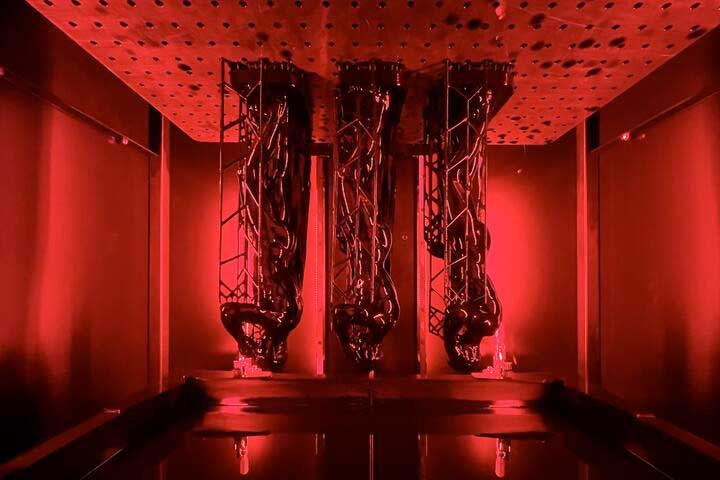University of Sheffield AMRC, in partnership with PES Scanning, has supported a major restoration project at Wentworth Woodhouse that will help to preserve the 18th century Germanicus statue for future generations.
Using modern 3D scanning technology, a highly accurate digital blueprint of the statue has been created. This not only allows for potential reconstruction in the event of damage, but also the production of miniature replicas to fund the restoration of the mansion.
Wentworth Woodhouse, one of the longest and grandest stately homes in Britain, is home to the statue of Germanicus, a cultural asset of enormous significance. The statue was commissioned in the 1750s and created by the same artist responsible for the sculptures of the famous Trevi Fountain in Rome.
To preserve Germanicus, the Wentworth Woodhouse Preservation Trust used the expertise of PES Scanning and AMRC. Using a handheld 3D laser scanner, the statue was scanned to an accuracy of 0.020 mm. The data obtained enabled the creation of a digital model which was used to 3D print replicas.
Nathan Bailey, metrology applications engineer at PES Scanning said: “PES scanning provides metrology and 3D scanning services for a range of different industries from aerospace to construction. We’re using data capturing technology to address the heritage challenges of today from restoration to preservation. The technology allows us to visualise how these items or buildings were back when they were originally built and it helps us restore them if needed to their former glory.”
Suzanna Mitchell, project engineer at the AMRC, said: “The replicas were manufactured using our Photocentric LC Magna 3D Printer, which is capable of creating large, high-detail, low-cost parts. This polymer AM technology uses an LCD Mask approach to fully expose each print layer instantly, allowing us to produce 3 statues in 31 hours. The print files were optimised and internal/external supports were applied to ensure the fine features were printed successfully; the support was then removed after printing. Without the availability of this technology, the replicas could have been much more difficult to produce with potentially higher costs and lower detail.”
The AMRC design experts used the scans to 3D print three miniature replicas of the statue, which are just 29 cm high – as opposed to the original height of 180 cm. The replicas were produced using a Photocentric LC Magna 3D printer, which can produce large-scale, detailed and cost-effective parts.
Dr Phil Yates, SME senior engineer at AMRC integrated manufacturing group, said: “Wentworth Woodhouse is gearing up for a major restoration of its site and artefacts and to be able to contribute to it, is a matter of great pride for the AMRC. The collaboration gave us the opportunity to implement our design and prototyping expertise for the benefit of a national heritage organisation of great cultural significance, while also turning the spotlight on how nurturing and guiding young manufacturing talent is at the heart of the AMRC’s mission.”
The project combines cultural heritage with modern technology and highlights the importance of technical skills for future generations.
Steve Ash, digital projects manager at Wentworth Woodhouse Preservation Trust, said: “Under consideration at the moment are ideas to sell small, museum-quality replicas of Germanicus, either as statues or as bookends. We may also create confectionary lines using the scans to create edible versions of the statue. The use of digital technologies at Wentworth Woodhouse is still in its early stages, but there’s no doubt that it will have an important role to play in both conservation and entrepreneurialism. The project collaboration with the AMRC and PES Scanning has shown the possibilities that lie ahead, and we are very much looking forward to continuing collaborating together.”
Yates added: “Technology today is developing rapidly and it has the potential to not only make a better tomorrow but also to preserve, conserve and restore the past. Using the technology at the AMRC and PES Scanning to create a model of the Germanicus statue is the first step towards this. And we hope to use our technical expertise for many such avenues, and continue our collaboration with The Trust.”
The project impressively demonstrates how advanced technologies are not only shaping the future, but also helping to preserve and restore the past. The collaboration between the AMRC, PES Scanning and the Trust demonstrates the many ways in which modern technology can be used in heritage conservation and offers exciting prospects for future projects.
Subscribe to our Newsletter
3DPresso is a weekly newsletter that links to the most exciting global stories from the 3D printing and additive manufacturing industry.





















